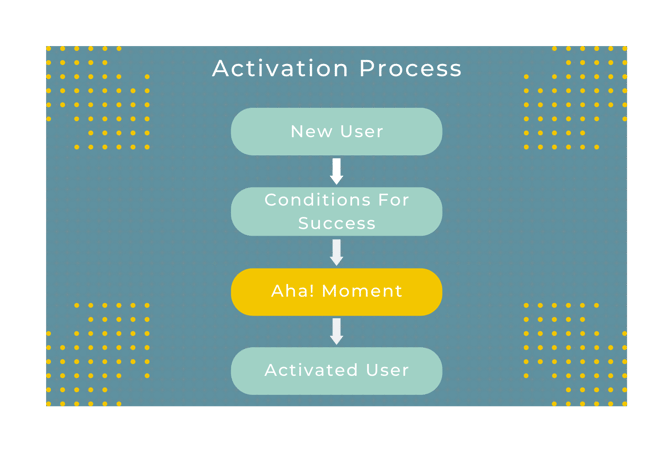The Aha Moment - What is it?
The Aha moment has become a staple of marketing strategy. The main goal of a product is to convert new users into activated users. The Aha moment is defined as the moment when users first experience the added value of your product and its benefits in their lives.
Reaching the Aha moment can be challenging. Although your product may deliver value, you must target the right users and define the conditions that culminate in the Aha moment.
We'll discuss what the Aha moment is in further detail, explain the activation process' role in a customer reaching it, and why the Aha moment is crucial for your product's success.
How Do Customers Reach The Aha Moment?
As we previously mentioned, customers reach the Aha moment when they first experience the value your product provides. But how do we define value for so many varieties of products?
For the user to reach the Aha moment, they must go through the activation process:

For a user to reach the Aha moment, conditions must be met. Examples of these conditions include the following:
- Time to event x in a product: This KPI is defined as the amount of time a customer takes to reach a key event to reach the Aha moment.
- Time to first key action: Your product may have a key action that must be completed to reach the Aha moment. This KPI tracks how long it takes a user to complete that action.
- Click to action x: If your product necessitates multiple action completions, it is important to mold your activation process around getting users to complete as many actions as necessary to reach the Aha moment.
- Clicks per feature: Sometimes a feature-heavy product takes a bit more time and actions per feature to reach the Aha moment. If your product is feature-heavy, be sure to structure your activation process conditions around clicks per feature.
How Do You Set Conditions For Success?
The most important part of the activation process for any company is understanding the conditions that must be met for your customers to achieve the Aha moment. Ideally, these conditions are short and easy to assemble, but certain products require users to satisfy multiple conditions.
Let's use a ride-sharing app as an example. A successful user is someone who signs up for the service, tries it, and uses it regularly to reach their destination. The user's level of success is the proportion of their transportation budget spent on the app instead of other alternatives (i.e. public transport, personal vehicles, taxis, etc.)
The ride-share company's Aha moment could be a successful pick-up and drop-off at the advertised time. That moment triggers the realization that the convenience of ride-sharing outweighs the cons of waiting for public transportation or a ride.
Knowing this, the ride-sharing business sets the following necessary condition to reach the Aha moment:
- The user must be at a supported location.
- The range of available ride tiers should match the user's expectations.
- The user must use a payment method to schedule a ride.
- The user must be dropped off at the specified location at the advertised time.
After reaching these four conditions, chances are the user has realized the value of the ride-sharing services. Although they may or may not use it on a regular basis, your product is the user's go-to for their ride-sharing needs because of the Aha moment.
Why The Aha Moment is Important
The Aha moment is responsible for attracting loyal users, and depending on your product, the stronger your Aha moment is, the more engaged your customer base becomes. This creates opportunities for upselling and cross-selling, which can greatly increase your expansion revenue.
Tracking the conditions that users must meet to reach your product's Aha moment is impossible without the help of modern analytics. With a tool like Toucan, you can track and share your user conditions and track your customer journey in real time.


.png?width=710&name=CTA%20Template%20%E2%80%94%20Free%20Trial%20(2).png)